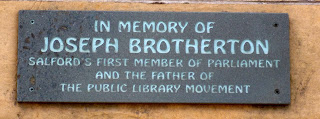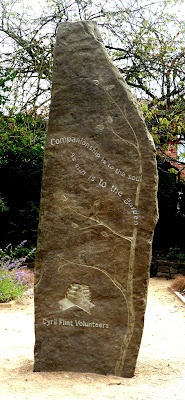Much has been written about Zadie Smith's NW, and I have no intention to add a great deal to that. But Smith does seem to represent a very interesting side of modern English literature: in NW above all, I think, her concerns are with the experimental, and that is rather unusual in an English novel: David Foster Wallace? Oulipo? McSweeney's? The American postmodernists? Probably all are influences.
Although I've read Smith's White Teeth (2000) and On Beauty (2005) but not The Autograph Man (2002) it's probably safe to suggest quite boldly that NZ (2012) is her most accomplished novel so far. This is a confident, diverse work that varies considerably in style. The first part mainly concerns Leah and the model seems to be watered-down Joyce with a kind of homage to Guillaume Apollinaire's concrete poetry thrown in – the page with text that resembles a tree, and a mouth with central 'T O N G U E' and the briefly described teeth arched round it, etc; then the second section dispenses with the previous dashes for speech and to some extent turns more conventional in its following the final days of Felix; the third part is Nathalie's and is divided into 184 sections; the very short fourth part follows Nathalie and Nathan's journey from Willesden to Hornsey Lane; and the even shorter last part is Nathalie seeing Nathan as the killer of Felix.
Throughout there's a love of the finer inflexions of modern speech that probably betrays the influence of Wallace, and there's a delightful, almost Oulipian playfulness: the obsession with the number 37 and its inclusion as four discrete extra chapters in between the normal number sequence in Leah's part, as well as its omission as a chapter number in Nathalie's part – meaning that the sequence actually jumps from 36 to 38 and ends at 185.
A number of literary quotations are inserted in the text, and some of the chapter titles in Nathalie's part allude to literature: one is called 'Rabbit', another 'Run, Rabbit', and 'Angst!' seems to suggest Updike's Rabbit Angstrom; there are also chapters titled 'Jane Eyre', 'Rumpole', 'Brideshead unvisited', 'John Donne, Lincoln's Inn, 1572', 'Sir Thomas More, Lincoln's Inn, 1494', 'L'isola che non c'è' (a translation of Peter Pan's 'Never-Never Land'), 'Doublethink', etc. Also, there are (or sometimes appear to be) references to the cinema: 'That Obscure Object of Desire', 'Vivre sa vie', 'Contempt', 'Speed'; and pop culture: 'Nirvana', 'Parklife', 'Beehive' (about Amy Winehouse), 'Holes' (suggesting Mercury Rev?), etc. It's also interesting that there's a chapter called 'The Number 37', which just happens to fall on...page 184.
NW is not just cleverness but concerns a number of serious issues, among them being: life in modern north-west London, class, ethnicity, the internet and modern technology in general, how people relate – or perhaps more importantly don't relate – to each other, but above all there is the continuation of Smith's theme from On Beauty: how fucked up people are.
Although I've read Smith's White Teeth (2000) and On Beauty (2005) but not The Autograph Man (2002) it's probably safe to suggest quite boldly that NZ (2012) is her most accomplished novel so far. This is a confident, diverse work that varies considerably in style. The first part mainly concerns Leah and the model seems to be watered-down Joyce with a kind of homage to Guillaume Apollinaire's concrete poetry thrown in – the page with text that resembles a tree, and a mouth with central 'T O N G U E' and the briefly described teeth arched round it, etc; then the second section dispenses with the previous dashes for speech and to some extent turns more conventional in its following the final days of Felix; the third part is Nathalie's and is divided into 184 sections; the very short fourth part follows Nathalie and Nathan's journey from Willesden to Hornsey Lane; and the even shorter last part is Nathalie seeing Nathan as the killer of Felix.
Throughout there's a love of the finer inflexions of modern speech that probably betrays the influence of Wallace, and there's a delightful, almost Oulipian playfulness: the obsession with the number 37 and its inclusion as four discrete extra chapters in between the normal number sequence in Leah's part, as well as its omission as a chapter number in Nathalie's part – meaning that the sequence actually jumps from 36 to 38 and ends at 185.
A number of literary quotations are inserted in the text, and some of the chapter titles in Nathalie's part allude to literature: one is called 'Rabbit', another 'Run, Rabbit', and 'Angst!' seems to suggest Updike's Rabbit Angstrom; there are also chapters titled 'Jane Eyre', 'Rumpole', 'Brideshead unvisited', 'John Donne, Lincoln's Inn, 1572', 'Sir Thomas More, Lincoln's Inn, 1494', 'L'isola che non c'è' (a translation of Peter Pan's 'Never-Never Land'), 'Doublethink', etc. Also, there are (or sometimes appear to be) references to the cinema: 'That Obscure Object of Desire', 'Vivre sa vie', 'Contempt', 'Speed'; and pop culture: 'Nirvana', 'Parklife', 'Beehive' (about Amy Winehouse), 'Holes' (suggesting Mercury Rev?), etc. It's also interesting that there's a chapter called 'The Number 37', which just happens to fall on...page 184.
NW is not just cleverness but concerns a number of serious issues, among them being: life in modern north-west London, class, ethnicity, the internet and modern technology in general, how people relate – or perhaps more importantly don't relate – to each other, but above all there is the continuation of Smith's theme from On Beauty: how fucked up people are.

























































